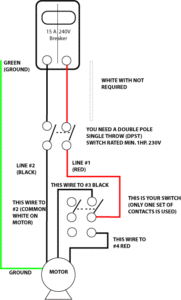FREE Standard Shipping On All Orders $100 or More!*
How to wire a 2-speed pool pump
Your new 2-speed pool pump finally arrived, the product of your long study of energy efficient pool pumps (now required in many states). It may come as a surprise to you that your existing pool timeclock no longer seems to be suitable for a 2 speed motor.

Sad, but true. 2 speed motors need to have a third wire, the low speed wire, coming from the timeclock. These types of pool and spa timeclocks are known as DPDT (Double Pole, Double Throw). A jumper between two of the terminals allows for low speed current to pass through to the pool pump. A standard Intermatic type of pool timeclock, (T104) can be replaced with the T106 series timeclocks, or the T106 can be wired in between the T104 and the 2 speed pump.
Alternatively, purchase a digital timeclock mechanism (shown in picture), and this will handle the job of adding the third wire from the timeclock to the pump. You still will need to add the third wire to the wiring harness.
The third wire should be a 12 ga wire, and you may find it difficult to stuff in a third wire into the flexible conduit that runs from the timer to the pool pump. It may be easiest to remove the wire harness completely from both the time clock and the pump - from both ends. Then twist all the wire together slightly and push through the conduit again, then reconnect.
Follow the instructions with your new DPDT timer (T106) or the Digital timers by Intermatic (PE153x) series in wiring from the breaker box to the new timer and from the timer to your new 2 speed pool pump. If you need to install the pump right away, you can install it as a one speed pump, and then you have time to order your new timeclock, and make the switchover.
If you have a controller system, such as a Jandy system, consult the owner's manual - many controllers will be able to power a two-speed pool pump with just a few configuration changes on your part.
Congratulations on buying a 2 speed pump, you are close to saving a ton of energy - once you get the motor rewired, that is!